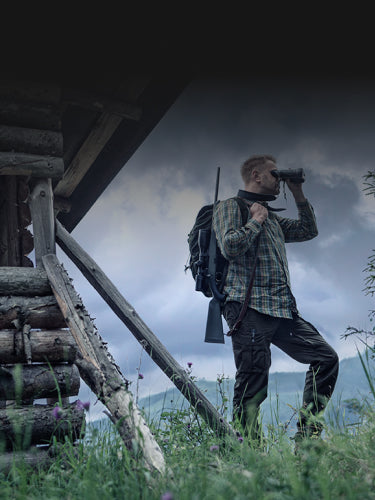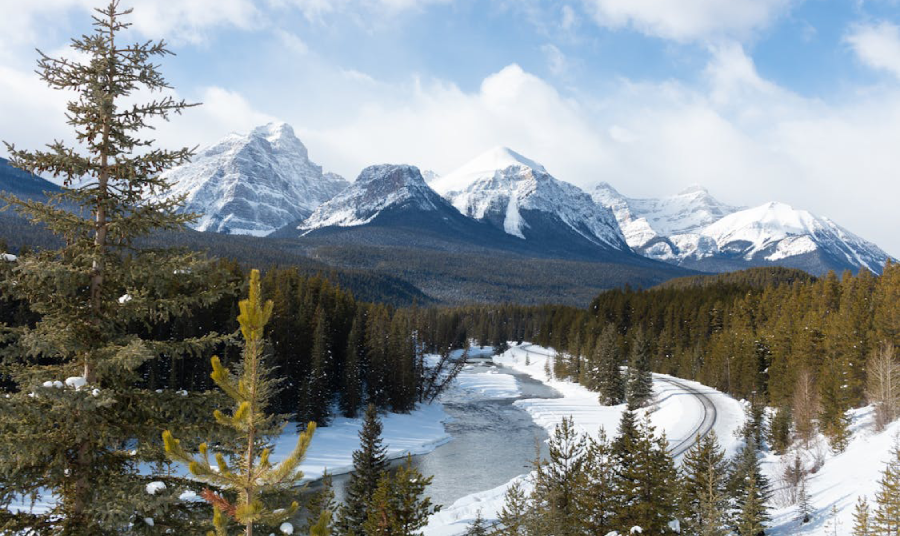Hunting in the great white north offers an unparalleled experience, with vast wilderness, abundant wildlife, and unique challenges that make it a dream destination for any outdoorsman. However, transporting thermal optics across the border requires careful planning and adherence to Canadian customs and legal requirements. Here’s a comprehensive guide to navigating the legalities of bringing thermal optics into Canada for your hunting adventure.
Step 1: Understanding Canadian and U.S. Laws on Thermal Optics
Before transporting thermal optics into Canada, one must understand the relevant laws and regulations:
- Prohibited vs. Permitted Devices: Thermal imaging devices are generally legal in Canada, but they cannot be used in ways that contravene hunting laws. Some provinces may restrict their use for hunting certain species or during specific seasons. Always check provincial hunting regulations.
- Customs and Border Protection: Canadian Border Services Agency (CBSA) inspects all incoming goods. Declaring your thermal optics and providing documentation is mandatory to avoid penalties.
- U.S. Export Regulations: If you are transporting thermal optics from the United States, be aware of the International Traffic in Arms Regulations (ITAR) and Export Administration Regulations (EAR):
- ITAR: Thermal imaging devices often fall under §120.3 of the International Traffic in Arms Regulations (ITAR), which regulates defense-related items. Exporting these items without proper authorization is prohibited.
- EAR: Some thermal optics may fall under dual-use items regulated by EAR, requiring an export license depending on their Export Control Classification Number (ECCN). For example, thermal imagers operating at a slower rate of 9Hz may be classified under ECCN 6A993 and may not require a license for export to certain destinations.
Step 2: Preparing Documentation
Proper documentation is essential for a smooth border crossing. Ensure you have:
- Proof of Purchase: Bring receipts or invoices for your thermal optics to prove ownership and value. This will help avoid delays during customs inspections.
- Export Compliance from the U.S.: If transporting thermal optics from the U.S., ensure compliance with ITAR or EAR regulations. Obtain the necessary export permits before traveling. Export permits can be obtained from the U.S. Department of State's Defense Export Control and Compliance System (DECCS) for ITAR-controlled items or the U.S. Department of Commerce for EAR-controlled items. Visit their respective websites for application details and further guidance.
- Hunting License: A valid Canadian hunting license for the province you intend to hunt in may also be requested by customs officials. Hunting licenses can be obtained through the provincial or territorial wildlife management agencies. For example, in Ontario, licenses are available from the Ministry of Natural Resources and Forestry, and in Alberta, hunters can apply through the Alberta Environment and Parks website. Each province has its own process, so be sure to check the specific requirements for your hunting destination.
- Import Permits: Some thermal optics may require an import permit under Canada’s Controlled Goods Program, which regulates controlled goods and technologies. Import permits can be obtained through Global Affairs Canada. Visit their website or contact their offices directly to verify the requirements and start the application process.
Step 3: Declaring Thermal Optics at the Border
When you arrive at the Canadian border:
- Declare Your Equipment: Inform the CBSA officer about your thermal optics. Failing to declare can result in fines, confiscation, or denial of entry.
- Present Your Documentation: Provide the necessary documents, including proof of purchase, export licenses, and any required import permits.
- Be Prepared for Inspection: CBSA may inspect your equipment to ensure compliance with Canadian regulations.
Step 4: Transporting Thermal Optics Safely
Follow these tips to transport your thermal optics safely and legally:
- Secure Packaging: Use a protective case to prevent damage during transit. Hard cases with foam inserts are ideal.
- Separate Components: If the thermal optics are mounted on a firearm, remove them and pack them separately to reduce scrutiny at the border.
- Avoid Prohibited Items: Do not attempt to bring prohibited items, such as suppressors, as this could lead to legal complications.
Step 5: Following Provincial Hunting Regulations
Once you’re in Canada, ensure your use of thermal optics complies with provincial hunting laws:
- Species Restrictions: Some provinces restrict the use of thermal optics for certain game, such as deer or elk, during specific seasons.
- Night Hunting Rules: While thermal optics are beneficial for night hunting, regulations vary by province. Verify whether night hunting is permitted in your hunting area.
- Ethical Hunting Practices: Use thermal optics responsibly to ensure ethical and legal hunting practices.
Common Pitfalls to Avoid
Failing to Declare: Always declare your thermal optics to avoid fines or confiscation. Failing to do so can result in serious consequences such as equipment seizure or denial of entry.
Lack of Export Permits: Ensure compliance with U.S. export laws if transporting from the United States. This includes verifying whether your thermal optics fall under ITAR or EAR regulations and obtaining the necessary export permits before travel.
Provincial Law Violations: Research hunting laws for your destination province to avoid breaking local regulations. Provincial restrictions on the use of thermal optics for specific game or night hunting can vary, so being informed ahead of time is essential for a lawful hunting trip.
Additional Considerations
Canada has a prohibited weapons list that includes certain firearms and accessories that cannot be brought into the country under any circumstances. Suppressors, for example, are always illegal in Canada, regardless of the firearm or intended use. Hunters must also be aware of the three classes of firearms as defined by Canadian law: non-restricted, restricted, and prohibited. Non-restricted firearms typically include standard bolt-action, lever-action, and pump-action hunting rifles and shotguns, such as the Remington 870 or Winchester Model 70. Restricted firearms often cover handguns with a barrel length of 105mm (4.1 inches) or more, and certain semi-automatic rifles like the AR-15 platform. Prohibited firearms include fully automatic weapons, short-barreled handguns with a barrel length under 105mm, and firearms such as machine guns, which are classified due to their design or military origin. Understanding these distinctions is essential when transporting firearms into Canada. Each class has specific import and usage regulations that must be followed.
For firearms and related accessories, including rifles equipped with thermal optics, Form CMP5589 must be completed and submitted to the Canadian Firearms Program. This form ensures that the firearm and any associated equipment comply with Canadian regulations.
For further details about transporting thermal riflescopes into Canada, you can contact the Canadian Border Services Agency (CBSA) at their official helpline or visit their website. The CBSA can provide information about import requirements, duties, and other regulations specific to your thermal optics. Additionally, Global Affairs Canada can assist with questions regarding import permits and controlled goods regulations. Be sure to reach out to these agencies well in advance of your trip to ensure you have all the necessary documentation and approvals.
Conclusion
Transporting thermal optics into Canada requires thorough preparation and compliance with both U.S. export laws and Canadian import regulations. By understanding specific laws such as ITAR, EAR, and Canada’s Customs Act, and by securing the proper documentation and permits, you can ensure a smooth border crossing. Once in Canada, adhere to provincial hunting laws to enjoy a successful and ethical hunting experience. Consulting with legal experts or authorities in both countries is advisable to ensure full compliance with all applicable laws and regulations.
Frequently Asked Questions
1. Are thermal imaging devices legal in Canada?
Yes, thermal imaging devices are generally legal in Canada, but usage must comply with hunting laws.
2. What documentation is required for transporting thermal optics into Canada?
Proof of purchase, export compliance from the U.S., and a valid Canadian hunting license may be necessary.
3. What are the U.S. export regulations to consider?
ITAR regulates defense-related items, while ECCN classification under EAR may require an export license.
4. How can I ensure a smooth border crossing with thermal optics?
Prepare all required documentation, including proof of purchase, export permits, and a hunting license.
5. Where can I obtain a Canadian hunting license?
Hunting licenses can be obtained from provincial or territorial wildlife management agencies, such as the Ministry of Natural Resources and Forestry in Ontario or Alberta Environment and Parks in Alberta.




